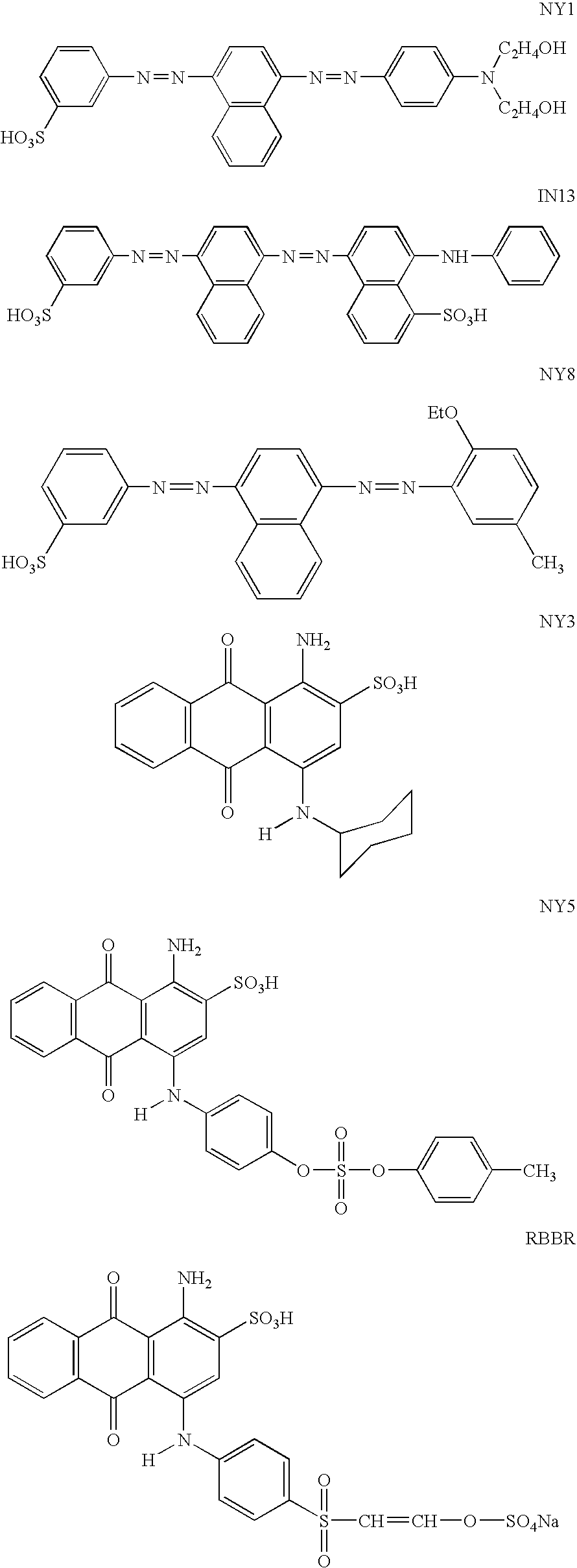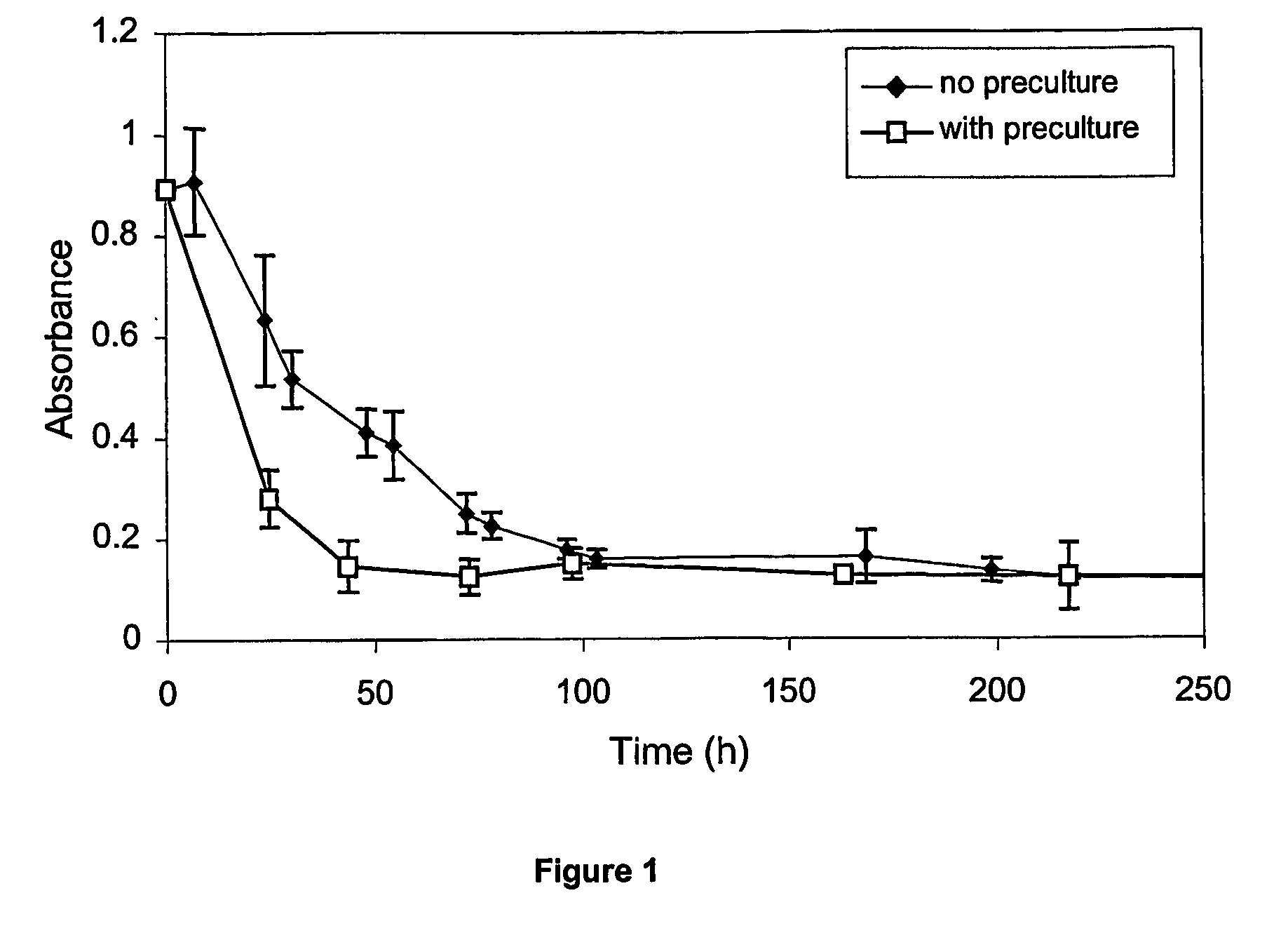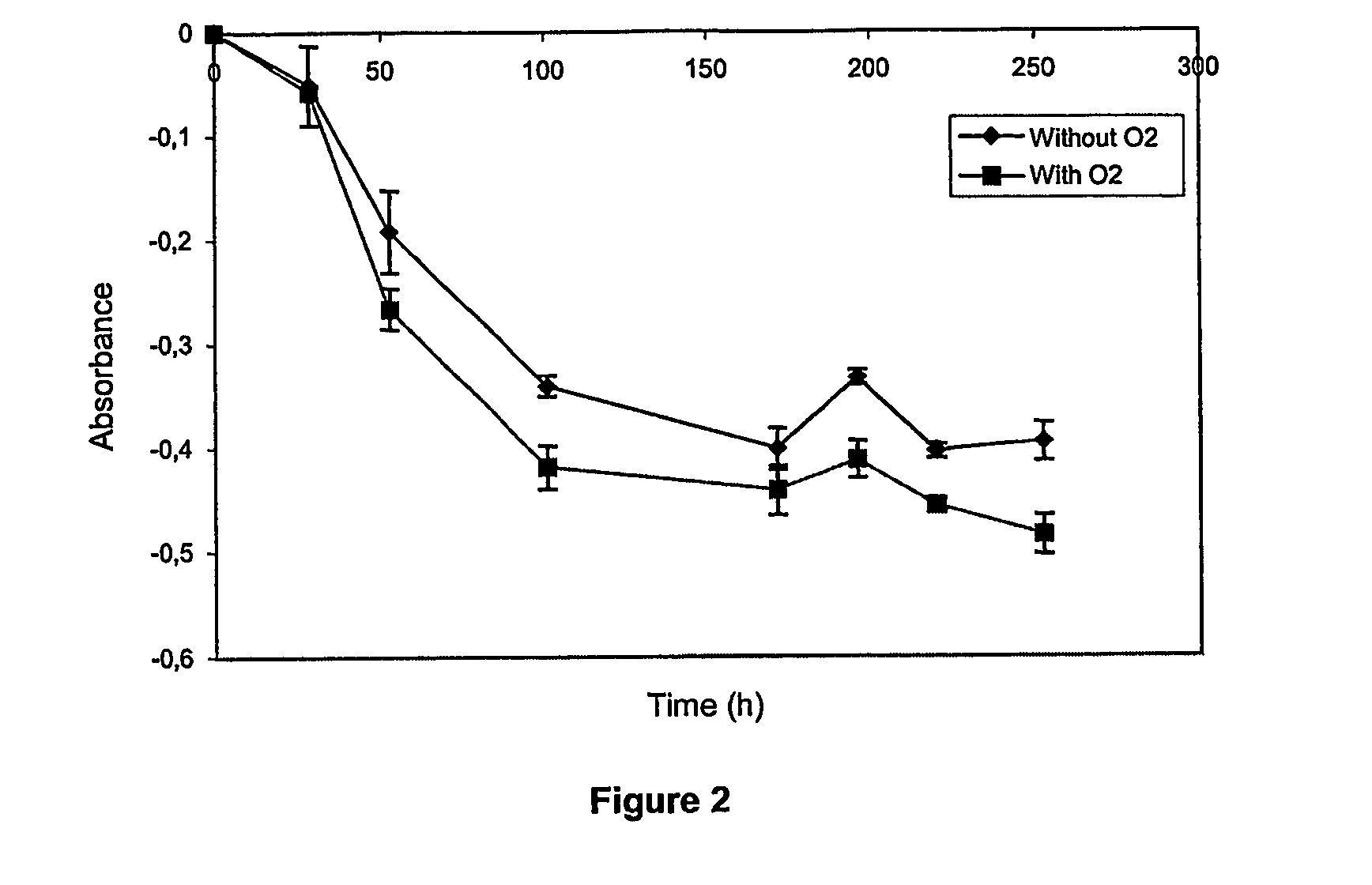Sustainable process for the treatment and detoxification of liquid waste
a liquid waste and sustainable technology, applied in the direction of textile industry waste water treatment, water/sludge/sewage treatment, water contaminants, etc., can solve the problems of generating carcinogenic compounds, difficult to degrade, and toxicity to living organisms, so as to improve the biodegradability of said liquid waste, efficient decolorization and detoxification
- Summary
- Abstract
- Description
- Claims
- Application Information
AI Technical Summary
Benefits of technology
Problems solved by technology
Method used
Image
Examples
example 1
[0101] In a preferred embodiment of the process according to the invention, the pretreatment step in said process is an ozonisation.
[0102] The ozone is produced from pure oxygen using an ozone generator of type OZONIA ZF10AT which can produce 10 to 30 kg of ozone per hour and can treat 800 m3 of industrial liquid waste per day. The concentration in ozone produced is 10% w / w (O3 / O2), the quality is controlled by spectrophotometry at 258 nm by passing the gas phase through a flow cell. The ozonisation of liquid waste is performed in a 50 m3 vertical reaction tank. A radial diffuser allows the injection of the gas in said liquid waste through a venturi tube. The flow rate of the gas varies from 11 to 22 m3 per hour. The liquid waste to be treated by ozonisation is usually at pH 5 (±0.5) and at a temperature of 30 to 35° C. The ideal incubation time is 1.5 hours, which is obtained by recycling said liquid waste through the tank. This ozone treatment allows a decrease of the color in sa...
example 2
[0105] A non-exhaustive list of suitable pretreatment according to the invention is given hereunder.
[0106] Adsorption:
[0107] The most commons adsorption supports are activated charcoal, silica gel, bauxite, peat, wood, cellulose derivatives, ions exchange resin.
[0108] For illustrating the pretreatment of adsorption on wood, the following example is given. In this example, wood shavings are constituted by pieces of about 4 square centimeters from Fagus sylvatica, obtained as a by-product from a furniture industry. Said wood shaving are added in a concentration of 3 g per liter and incubated during 24 hours. The color of a dye industry effluent was measured before and after this pretreatment and a decrease from initial 105 000 to 72 000 color units (APHA) was measured. This result is nearly the same as obtained through ozonolysis, but the costs related to this latter method are considerably reduced.
[0109] Membrane Filtration:
[0110] Ultrafiltration, micro or nanofiltration: use a ...
example 3
[0126] A non-exhaustive list of fungi tested during the process according to the invention is shown in table 1. These fungi are deposited in the fungal library MUCL (Mycotheque de l'Universite catholique de Louvain).
TABLE 1GenusSpeciesN. MUCLAcanthophysiumbisporum32213Acanthophysiumcerussatum32645Acanthophysiumlividocaeruleum33688Aleurobotrysbotryosus32323Aleurodiscusaurantius33921Aleurodiscusgabonicus32433Aleurodiscuswakefieldiae34807Amphinemabyssoides32977Amylostereumareolatum32874Amylostereumchailletti32912Amylostereumlaevigatum33857Armillariagallica31339Aspergillusniger19001Asterostromacervicolor38354Asterostromalaxum38356Asterostromaochroleucum38358Auriculariaauricula28689Auriculariaauricula38073Auriculariacornea28966Auriculariafuscosuccinea28965Auriculariapolytricha30975Auriculariapolytricha38067Botryobasidiumcandicans33808Botryobasidiumsphaericosporum32749Botryobasidiumsphaericosporum32750Botryohypochnusisabellinus33809Caloceraviscosa31690Chaetomiumbrasiliense19261Chaetomiu...
PUM
 Login to View More
Login to View More Abstract
Description
Claims
Application Information
 Login to View More
Login to View More - R&D
- Intellectual Property
- Life Sciences
- Materials
- Tech Scout
- Unparalleled Data Quality
- Higher Quality Content
- 60% Fewer Hallucinations
Browse by: Latest US Patents, China's latest patents, Technical Efficacy Thesaurus, Application Domain, Technology Topic, Popular Technical Reports.
© 2025 PatSnap. All rights reserved.Legal|Privacy policy|Modern Slavery Act Transparency Statement|Sitemap|About US| Contact US: help@patsnap.com



